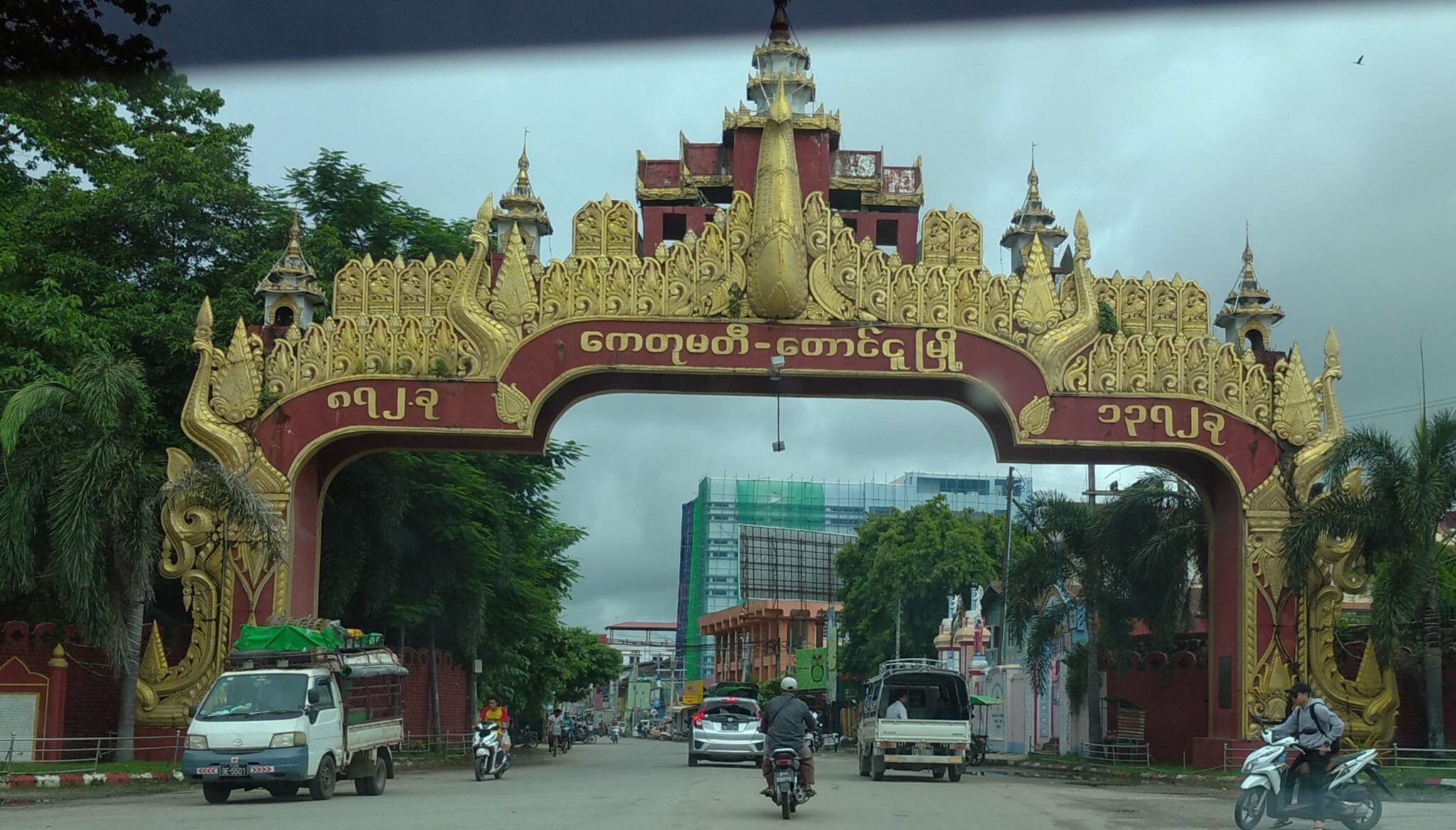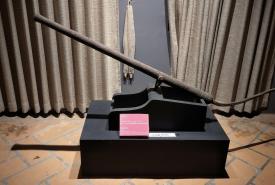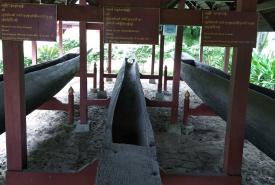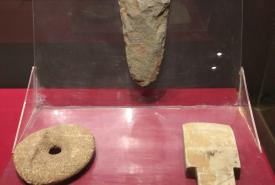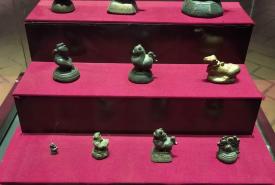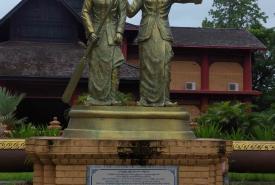21 Nov
Ancient Ketumati City in Toungoo era which initiated the united Second Myanmar Empire turned 510 years in 2020. Kings of Toungoo established Toungoonge, Toungoogyi (Danyawady), Myawady and Dwarawady cities starting from 1278 AD. King Mingyi Nyo built Ketumati as last city of Toungoo era in 1510 AD.
Five Ketumati-Toungoo cities
Toungoo is 277 kilometres north from Yangon and 139 kilometres southeast of Nay Pyi Taw. It is located on 663.15 square miles of area above 162 feet of sea level, between 18° 56’ and 18° 57’ north latitude and 96° 25’ and 96° 27’ east longitude.
Toungoo Township shares border with Htantabin and Thandaung townships in the east, Paukkhaung Township in the west, Ottwin Township in the south and Yedashe Township in the north. Sittoung River streams along 15 miles in length from the north to the south in Toungoo Township located at the cape of Minwun Mountain and origin of Khabaung Creek.
Toungoonge city was established by Thawungyi and Thawunnge brothers in 1278 AD. They also built Toungoogyi in 1279 AD and Thawungyi took power of the State. King Mingyi Nyo who ascended the throne in 1485 AD established Myawady City, 500 tars north of Toungoo in 1486. Five years later, he moved the royal city to Dwarawady in 1491.
King Mingyi Nyo established Ketumati City in 1510 AD with 700 tars in length from the east to the west and 500 tars in width from the south to the north. Its walls were formed with 20 gates, 20 ordination halls and four corner Cetis.
Currently, Toungoo Township is constituted with two towns—Toungoo and Ketumati—with 27 residential wards and 251 villages in 37 village-tracts. Walls and moats can be seen till today. The ancient wall is under maintenance of the Department of Archaeology and National Museum.
The Department of General Administration mentioned there are 75 pagodas and 317 monasteries in Toungoo Township. Among them, Myatsaw Nyinaung, Shwehsandaw, Myazigon, Seekhongyi and Myat Neinda are historic pagodas.
Ketumati Museum
510 years old Ketumati-Toungoo Township which has been passing successive eras left historic buildings and historical objects. Among them, U Khin Maung Aye (CB Bank Chairman), a local of Toungoo Township, keeps wooden, earthen, ceramic, lacquer wares and Buddha images of his old generations in 12 wooden cupboards at Royal Ketumati Hotel.
To showcase such objects, Vice Chair of Kaung Myanmar Company Daw Khin Hla Hla sought a permit to establish a regional museum in 2015 and renovated the rest house of the golf training range as a two-storey building between the western wall and western moat of Ketumati City on Bohmu Po Kun Street in Ward 11 of Toungoo.
The Ministry of Culture provided assistance for systematic display of the ancient objects at the museum. The building and signboard of the museum were commissioned into service at the ceremony to mark the 505th founding anniversary of Ketumati-Toungoo City in 2015.
Retired professor/dean of Myanmar Department Dr Mar Mar Wai of Toungoo University took responsibilities for in-charge of the museum and applied for establishment of the museum at the Ministry of Religious Affairs and Culture in February 2016.
Bago Region Department of Archaeology and National Museum approved items, numbers and terms of the preserved objects in 2015 and 2017. The museum had got the permit to preserve ancient objects. The Department of Archaeology and National Museum in 2018 scrutinized more than 700 additional objects for registration.
Museum officials made field trips to Toungoo and environs and collected ancient and rare objects. And, more than 600 books were kept at the museum for public observation.
What is museum?
Myanmar encyclopaedia Volume VII stated the museum is the buildings to store various kinds of objects contributing to observers in all aspects. Likewise, Myanmar dictionary defined the museum as the building to display the objects observable for the people.
The basic museum science mentioned that the museum is a single site to gather ancient artefacts or recordable objects for public observation and for conducting research so as to widen knowledge scope of the people as a learning centre.
The Protection and Preservation of Ancient Monuments Law enacted on 22 July 2015 mentioned that museums are buildings operated by any government organization or regional administrative body or private sector for preserving and conducting research on artistically physical and mental heritages based on cultural and historical values for the sake of the people to conveniently observe and learn. At present, the museum bill has been drawn. After seeking approval of the Pyidaungsu Hluttaw, the bill will be approved as a law.
There are more than 55,000 museums across the world. Among them, the museums can be classified depending on types, opened by governments of relevant countries and private sectors.
Objects on display
Royal Ketumati Cultural Museum building is of two-storey facility. Ancient objects are kept in glass boxes on each stair. On the ground, a bell made of lacquer and paper in shape of King Bayintnaung Bell can be seen. In fact, the genuine bell bore bell inscriptions recognized as a world heritage. The original bell can be seen at the eastern stairway of Shwezigon Stupa in NyaungU.
King Bayintnaung ordered to carve bell inscriptions in Pali, Mon and Myanmar languages with exact dates and events. So, it thoroughly contributed to amending different facts and figures of books in history.
King Bayintnaung’s Bell is three feet and eight inches in height, three feet and six inches in circumference, 10 feet and three inches in basic circumference, six inches in thickness, one feet and seven inches in diameter, and one feet and seven inches in height of bell ring. Bell inscriptions were carved in Mon and Myanmar languages on the bell body and five lines of inscription in Pali on above the neck of bell.
The bell inscriptions mentioned King Bayintnaung with the title of Thiri Pawara Maha Dhamma Razadiraza cast a bell and hung it on 23 May 1557, Sunday at Shwezigon Pagoda donated by Bagan Kings Anawrahta and Kyansittha.
As Bayintnaung bell inscription bore firm contemporary records, exact dates and days, exact names of King Bayintnaung and queen, and fulfilment of needs at Myanmar histories, the UNESCO recognized it as memory of the world for the fourth one of Myanmar in 2017.
A total of 22 glass boxes in which the Bayintnaung bell replica and ancient objects are kept can be seen on the ground floor of the museum. These ancient objects are stone and bronze wares as well as iron sword, iron spear silver sword and others.
Three bronze tattooing devices, broken glaze pieces, glaze coated earthen plate, bronze spoons and an earthen plate bearing offensive moves can be seen in the museum. Significantly, a five shelves wooden post box and silver embroidery sarong are also displayed.
Likewise, visitors can view bronze weights, silver and lead coins, a string of beads made of petrified sal and pieces of bead in Toungoo era, strings of bead made of elephant statues and tiger statues, earplugs, earthen urns, bricks with signs, earthen and glaze reliefs and a gong of clock.
Six bronze statues bearing episodes of giving birth to the Buddha embryo, trip to jungle, cutting hair, Enlightenment, preaching Dhammacakka Desana and attainment of Parinibbana are kept in 20 glass boxes on the first floor of the museum.
Moreover, earthen marble Buddha images, folded papers, gilt Kammava, gilt palm leave inscriptions, pipes, pieces of broken pots bearing designs and three bronze bells including a tusk carved into 28 Buddha images are displayed on the same floor. Human utensils such as clock cupboard, bracelet and necklace of Kayin ethnics, turban, meal box, trays, pots and one iron cannon of Kayah ethnic are also put on display. The cannon was salvaged from underwater of Toungoo Lake.
A replica of Myaceti stone inscription carved in 913 which is one of world heritage sites on the platform of Myaceti and Bagan Archaeological Museum is kept in centre of the museum. Likewise, one more replica of the stone inscription on collection of tax in Myanmar language by King Bayintnaung from Bagan Shwegugyi Pagoda is also showcased.
All objects displayed in the museum are labelled with term, work, era and location set by the Department of Archaeology and National Museum.
Two boats carved in logs in Nyaungyan era found from Swa Creek and one boat made of log in Konbaung era from Chaungmange Creek are kept at back of the museum whereas a part of western wall of ancient Ketumati City excavated by the Department of Archaeology and National Museum can be seen on the left side of the museum.
There remain various historical and cultural heritages across the nation. Better preservation of these heritages can prove cultural value of Myanmar. So, establishment of government museums as well as private museums will much benefit the observers.
By Maung Tha (Archaeology) (Translated by Than Tun Aung)
References:
Brief History of Toungoo (U Chan Mya)
Toungoo History and Old History of Toungoo (Dr Mar Mar Wai)
Basic Museum and Museum Procedure Technology (Ba Tint)
